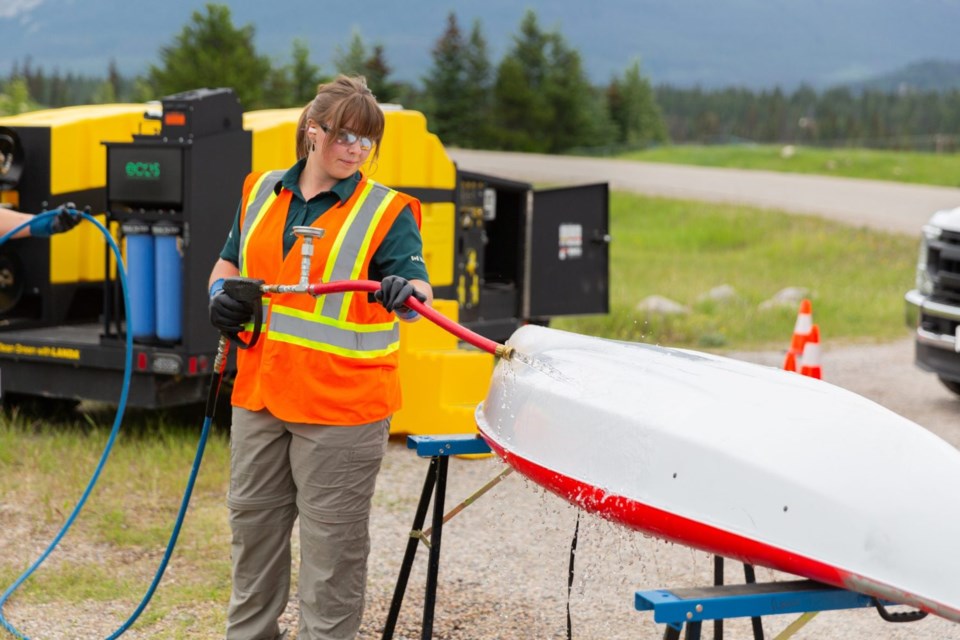Scott Hayes | [email protected]
Local Journalism Initiative Reporter
When it comes to aquatic invasive species (AIS), no news is good news.
Parks Canada’s pilot project this summer reported a clean bill of health for waterbodies in Jasper National Park: no whirling disease and no invasive mussels, for example.
“Our team at the station and at the waterbodies did not encounter any invasive mussels or high-risk invasive species on any watercraft,” said Christopher Waldinsperger, program co-ordinator for aquatic invasive species prevention in Jasper National Park.
The AIS prevention program operated seven days a week from late June through the Thanksgiving weekend.
Team members patrolled Maligne, Talbot, Patricia, Pyramid, Edith and Annette Lakes, all high-traffic waterbodies.
Part of the prevention program involved having a team also conduct monitoring activities, including shoreline surveys and substrate sampling, to understand and address the potential threats to our aquatic ecosystems.
Parks Canada will continue to collaborate with the researchers at both the University of Alberta and Simon Fraser University to enhance its monitoring and prevention strategies.
The team members also operated a temporary aquatic invasive species inspection station and boat wash on Cottonwood Creek Road, as well as participating in public awareness initiatives through interpretive and outreach activities at Whistlers Campground outdoor theatre on Parks Day and during the Canada Day parade.
Altogether, they engaged with more than 3,000 visitors across the park.
That is a success, Waldinsperger said, and it helps to make the case for the program to continue into the future.
“We’re going to leverage our insights gained this year. The Jasper National Park Management Plan in 2022 made a commitment to enhancing our AIS prevention initiatives and the capacity for inspecting and decontaminated watercraft. This was our inaugural season to test that and we’re going to take what we learned from this year and address our challenges and continue our journey forward.”
He added that the success of keeping AIS out of Jasper National Park’s waterbodies is a shared responsibility with the boating members of the public.




